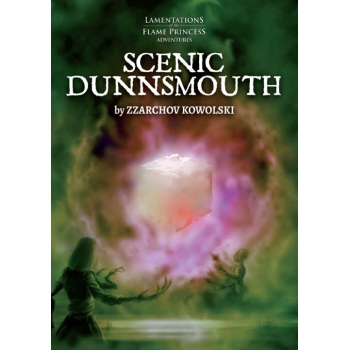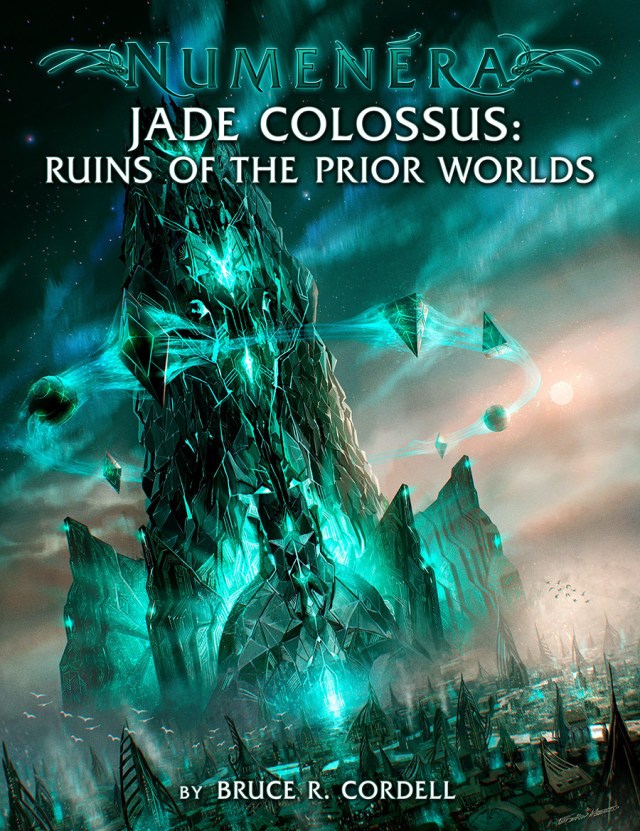 Lamentations of the Flame Princess is known for adventures that are not like things you’ve seen before while also being extremely useable at the table. Zzarchov Kowolski’s Scenic Dunnsmouth is a bit less of the first (in fact, it heavily leans on the tropes of the haunted bucolic village, a la The Wickerman) but heaping hordes of the second.
Lamentations of the Flame Princess is known for adventures that are not like things you’ve seen before while also being extremely useable at the table. Zzarchov Kowolski’s Scenic Dunnsmouth is a bit less of the first (in fact, it heavily leans on the tropes of the haunted bucolic village, a la The Wickerman) but heaping hordes of the second.
Dunnsmouth is a difficult-to-reach village with a secret. Or two. Maybe three. Just how many secrets it has entirely depends on how the village is constructed, and it’s constructed by the use of dice and common playing cards. The heart of Scenic Dunnsmouth is this village generator. By dropping some dice (specifically: ten d6s, one d8, one d4, and two different colored d12s) you create the general map of the village. You then populate the village using the playing cards. The cards and dice interact to create mysteries, alliances, and antipathies within the village for the players to tease out and play with.
Generating the village takes maybe 15 minutes, so it’s a quick-and-easy last-minute prep option. It’s a great option for one-off and convention games because no two villages generated with this system will be alike, or contain the same mysteries. You can add a bit of foreshadowing coolness by having the PCs encounter a fortune-teller before they arrive in Dunnsmouth; as you lay out the cards to decide who is in the village and where they live, you can drop cryptic clues as to what the PCs will encounter. Or build an entire campaign around the PCs encountering a series of villages, each a bizarre, fun-house mirror of the others.
Scenic Dunnsmouth is written for the Lamentations of the Flame Princess RPG and so can easily be used with just about any TSR-era version of D&D. However, being more of an exploration-and-investigation sort of adventure (there are things to kill, just not in every cottage, unless you get some extreme rolls on the dice) it’s very easy to port over to 5th edition D&D or Pathfinder and would even work well for creating villages for Numenera. You could easily use the village-creation system to make a starting village for a new campaign you didn’t know you were running until the last minute, or to pepper your campaign map with small hamlets, each housing its own twisted little secret.
The book itself is 112 pages long in the smaller format LotFP favors, making it very easy to use at the table. The interior illustrations are black, white, and red, and mostly serve to clue the DM into what’s happening in that part of the village at a glance. The quick, simple, and nearly ubiquitous utility of Scenic Dunnsmouth makes it a must-have in any DM’s toolbox.



